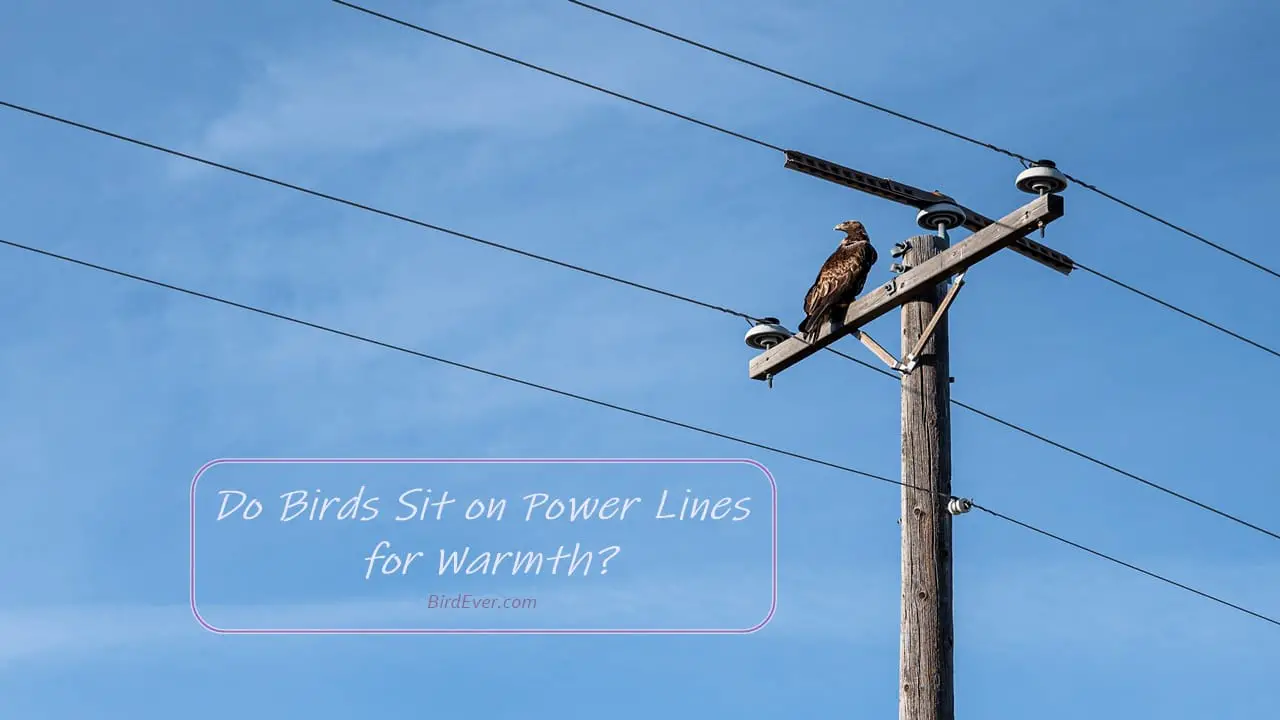Do Birds Sit on Power Lines for Warmth? The Truth Unveiled
Are you a bird enthusiast? Most probably yes. Since you are reading this blog. Lucky for you! The reason is in this blog we are going to reveal the fascinating truth behind why birds often choose to sit on power lines. One of the common misconceptions is that birds perch on power lines solely to seek warmth. But is that really the case?
It’s important to understand that birds have different ways of regulating their body temperature and sitting on utility poles might not be as cozy as it seems. While power lines do emit some heat, it’s usually not enough to significantly warm up a bird’s body.
Additionally, birds sitting on power lines can be exposed to electrical potential, including voltage, which can be dangerous if they take the path of least resistance.
So why do they choose this peculiar spot then? Well, it turns out that power lines provide birds with several advantages beyond just warmth. The primary reason birds choose to rest on power lines is not for warmth but for convenience and safety.
Power lines provide a clear vantage point that allows larger birds, such as the American kestrel, to survey their surroundings and keep an eye out for potential threats, thanks to their keen eyesight. The high vantage point also helps them locate prey or spot food sources from a distance.
Besides, power lines and electrical wires offer a stable perch with minimal movement, making it easier for birds to balance and conserve energy while resting. Additionally, power lines play a crucial role in the flow of electricity, providing volts of energy to homes and businesses.
Understanding Bird Behavior on Power Lines
Understanding bird behavior on power lines can provide valuable insights into their natural habitat and daily activities. While warmth may not be the primary reason birds choose to sit on power lines, it is just one factor among many that influence their decision.
Birds are highly adaptive creatures and will seek out environments that offer the best combination of safety, convenience, and resources. Power lines, with their elevated position and stable perches, fulfill these criteria for many bird species, including passerines, hawks, and large birds.
In addition to these practical advantages, there are other potential benefits that birds may derive from sitting on power lines. For example, power lines can act as a form of communication and socialization for birds.
They serve as meeting points where birds can gather, interact, and establish hierarchies within their flocks. By perching on power lines during mating season, birds can engage in displays of dominance or courtship rituals to attract mates.
The Phenomenon of Birds on Power Lines

The phenomenon of birds perching on power lines is a common sight that has fascinated both scientists and bird enthusiasts alike. These seemingly delicate creatures effortlessly balance themselves on the thin wires, creating a mesmerizing sight for anyone who happens to glance up.
But why do birds choose to sit on power lines in the first place?
As mentioned earlier, it is not solely for warmth, although in colder climates, the heat generated by the electric current can provide some relief. Rather, birds are drawn to power lines for their stability and the advantageous view they offer high up.
Do Birds Sit on Power Lines for Warmth? Reasons Explained
While power lines do generate heat, it is not the primary reason why birds choose to sit on them at certain times of the year. The insulation provided by their feathers keeps them warm enough, and they have other reasons for perching on power lines, such as stability and a good vantage point.
Birds perching on power lines, including small birds, is a behavior that has been observed worldwide. Despite their seemingly delicate frames, birds are able to effortlessly balance themselves on the thin wires, creating a fascinating spectacle for those lucky enough to witness it.
Contrary to popular belief, the primary reason why birds choose to sit on power lines is not for warmth, although in colder climates, the heat generated by the electric current can provide some relief. However, sitting on power lines can be dangerous for birds as they risk electrocution.
Other Reasons for Birds Sitting on Power Lines
In addition to heat conservation, there are several other reasons why birds choose to sit on power lines and tree branches, such as spotting a new bird in the area.
One of the main reasons is stability. Power lines and tree branches provide a sturdy and secure surface for birds to perch on, allowing them to rest and observe their surroundings without the fear of falling.
The wires and branches also offer a good vantage point, giving birds an advantageous position to spot potential prey or predators.
Furthermore, power lines and tree branches act as a convenient transportation system for birds, providing them with elevated pathways to move swiftly and efficiently across their territory.
Power Lines as a Vantage Point
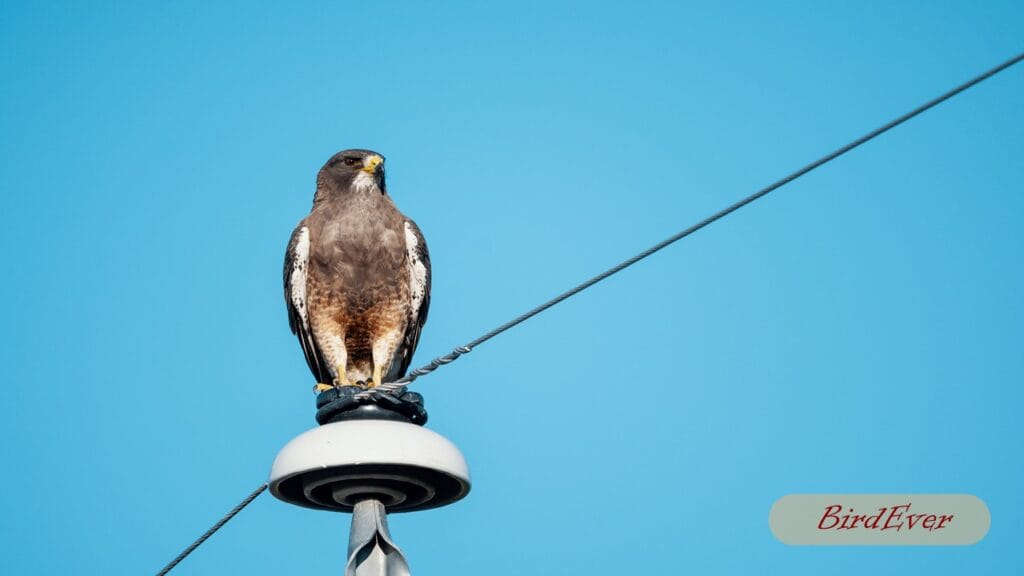
Power lines not only provide birds with a stable and secure perching spot, but they also act as an excellent vantage point for songbirds. From their elevated position, birds have a clear view of their surroundings, allowing them to scan for potential prey or keep an eye out for predators.
This advantage gives them a better chance of survival and success in their daily activities. Whether it’s spotting a tasty meal or detecting any potential threats, birds sitting on power lines have a strategic advantage that comes with their choice of perch.
It’s fascinating to observe how different bird species, including songbirds, utilize this advantageous viewpoint in their own unique ways.
Protection from Prey
Birds sitting on power lines with larger wingspans may also find protection from predators, such as raptors. The height and position of power lines make it difficult for ground-dwelling predators to reach them, providing a sense of safety and security.
This allows birds to rest and observe their surroundings without constantly being on high alert. By utilizing power lines as a refuge, birds can minimize the risk of becoming prey themselves, ensuring their survival in an often-competitive ecosystem.
In addition to warmth and protection, power lines offer birds a convenient mode of transportation. With their interconnected network stretching across vast distances, power lines serve as a highway system for birds.
Social Gathering and Resting Place for Birds
Except for their practical benefits, power lines also serve as social gatherings and resting places for migratory birds. These elevated perches provide a central meeting point where birds can congregate, interact, and communicate with one another.
It’s not uncommon to see flocks of birds lining up on power lines, engaging in social behaviors such as preening each other’s feathers or engaging in courtship displays. This social aspect of power line perching enhances the bird’s sense of community and strengthens their social bonds.
Moreover, power lines also offer a convenient resting spot for birds during migration or long flights, which is why the Audubon Society advocates for the protection of power line habitats for birds.
Building Nest
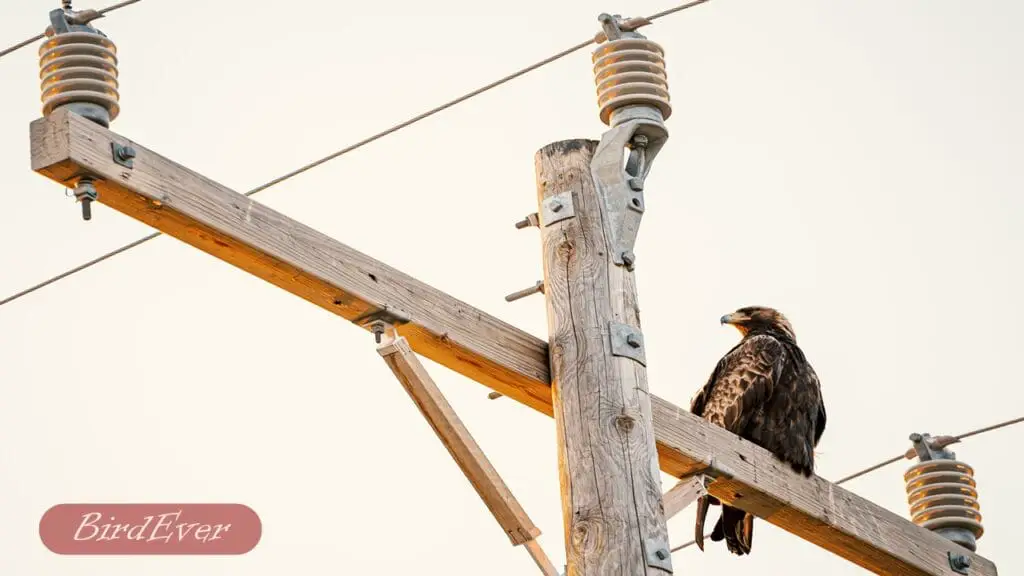
Birds may build nests on power lines if they are sturdy enough to support the weight of the nest and its occupants. This behavior is more commonly observed in larger bird species that construct large nests, such as eagles or ospreys.
How Do Birds Utilize Power Lines for Heat Conservation?
Birds and foxes utilize power lines and telephone wires as a means of heat conservation, especially in colder climates. While power lines may not provide direct warmth, they serve as a strategic perch for birds and foxes to minimize heat loss.
By roosting on the wires, birds and foxes can position themselves closer together and create a communal heat source. This behavior is particularly common during chilly nights when huddling together on the power lines helps them conserve energy and stay warmer.
So while warmth may not be the sole reason why birds and foxes sit on power lines and telephone wires, it certainly plays a role in their overall strategy for surviving cold weather conditions.
One Interesting Observation about Birds Sitting on Power Lines
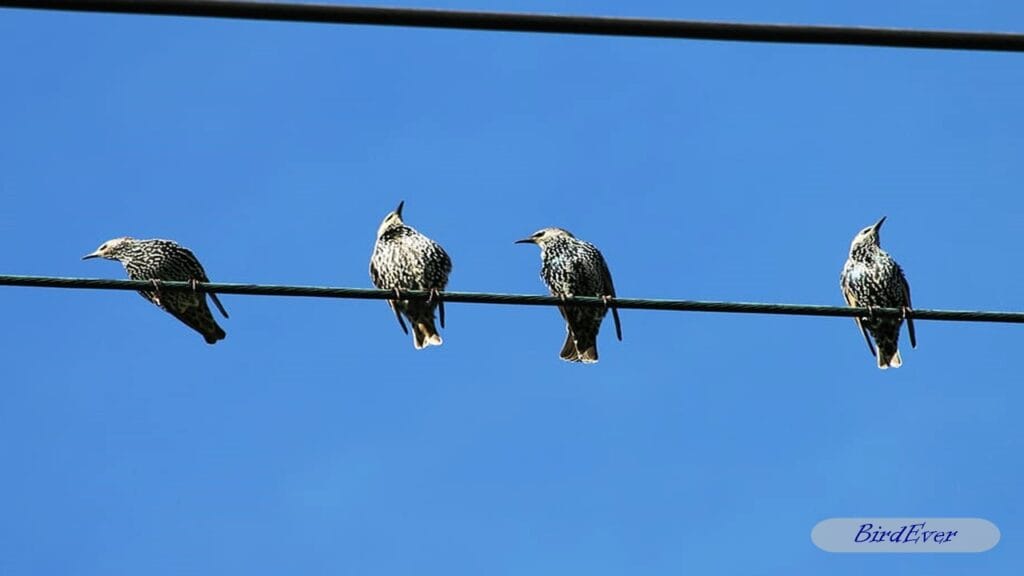
One interesting observation regarding birds sitting on power lines is that they often face the same direction. If you look closely, you’ll notice that when a group of birds gathers on a power line, they all align themselves in the same orientation.
This phenomenon can be attributed to a few factors. it is believed that by facing the same direction, birds are able to scan their surroundings more efficiently for potential threats or sources of food.
It allows them to have a wider field of view and react quickly to any movement or changes in their environment, including the movement of electrons through the power line.
Also Read: Are Finches Good Pets?
Do Birds Sit on Power Lines for Warmth? FAQs
Do birds sit on power lines for warmth? Do you still want to learn more about this topic? Then go through the following FAQs also.
Do all bird species sit on power lines during winter?
While many bird species do seek refuge on power lines during winter, it is not an activity that all birds engage in.
Some bird species have different strategies for staying warm during the cold months, such as finding sheltered areas or burrowing into snow banks. What’s more, certain birds may migrate to warmer regions altogether.
How a bird sitting on a high power line is still safe?
Birds sitting on high power lines may appear risky, but they have evolved certain adaptations that keep them safe. One such adaptation is their ability to minimize contact with the power line.
Additionally, the electricity flowing through power lines is typically insulated and poses minimal risk to the birds. Their feathers also provide some insulation, helping them to regulate their body temperature effectively.
So while it may seem precarious, birds sitting on high power lines are actually quite safe.
Why do birds sitting on power lines not get electrocuted?
Birds sitting on power lines do not get electrocuted because they are not grounded. Power lines carry electricity, but the birds themselves do not complete a circuit.
Unlike humans or other animals that may accidentally touch both a live wire and the ground, birds are able to safely perch on power lines without any harm.
Why do birds sit on power lines at sunset?
Birds sitting on power lines at sunset is a behavior that has been observed in many bird species. One reason for this could be that power lines, especially those made of metal, retain heat from the sun and provide a warm perch for the birds as temperatures start to drop.
Moreover, power lines offer a clear vantage point for birds to observe their surroundings and search for potential food sources or predators. The elevated position also provides them with a sense of security and enables them to stay vigilant.
Do birds sleep on power lines?
Yes, birds do sleep on power lines. Power lines provide a relatively safe and elevated perch for birds to rest and sleep. During the night, when most birds are asleep, they may choose to settle on power lines as it offers them a high vantage point to keep an eye out for potential predators.
It’s important to note that while power lines can be a convenient resting spot for birds, they also need to be cautious of their surroundings and remain alert even while sleeping.
Conclusion
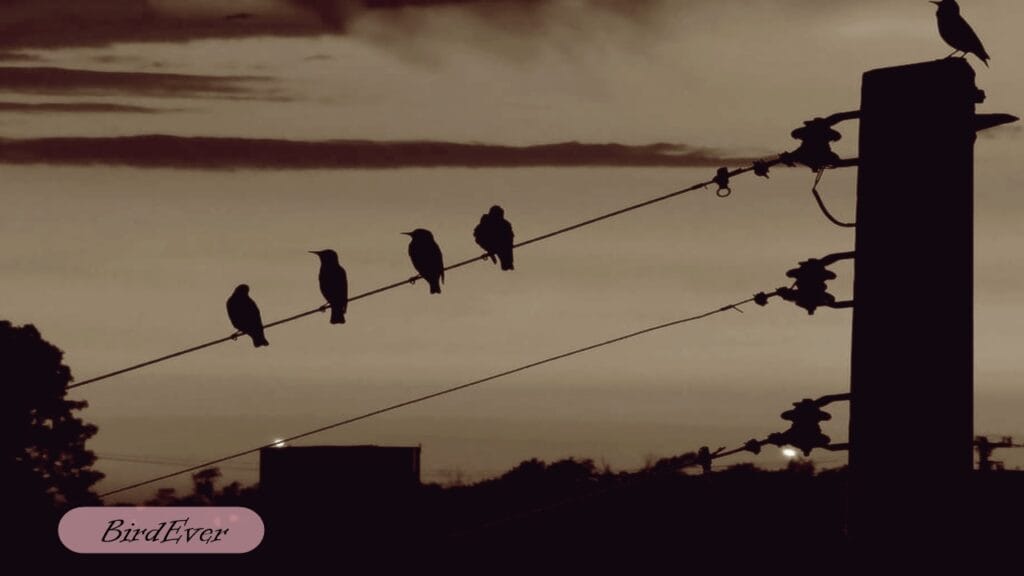
In conclusion, birds are intriguing creatures, each with their own unique behaviors and adaptations. One fascinating question that often arises is whether birds sit on power lines for warmth. It’s a curious thought, isn’t it?
After all, power lines can generate heat when electricity flows through them. While it may seem logical to assume that birds perch on power lines in search of warmth, the truth is a bit more complex.
It is fascinating to observe the variety of bird species that frequently utilize power lines and the interesting behavior of birds facing the same direction.
However, it is important to note that not all bird species sit on power lines during winter. Overall, power lines have become an integral part of the ecological landscape, providing both benefits and potential risks for our avian friends.
